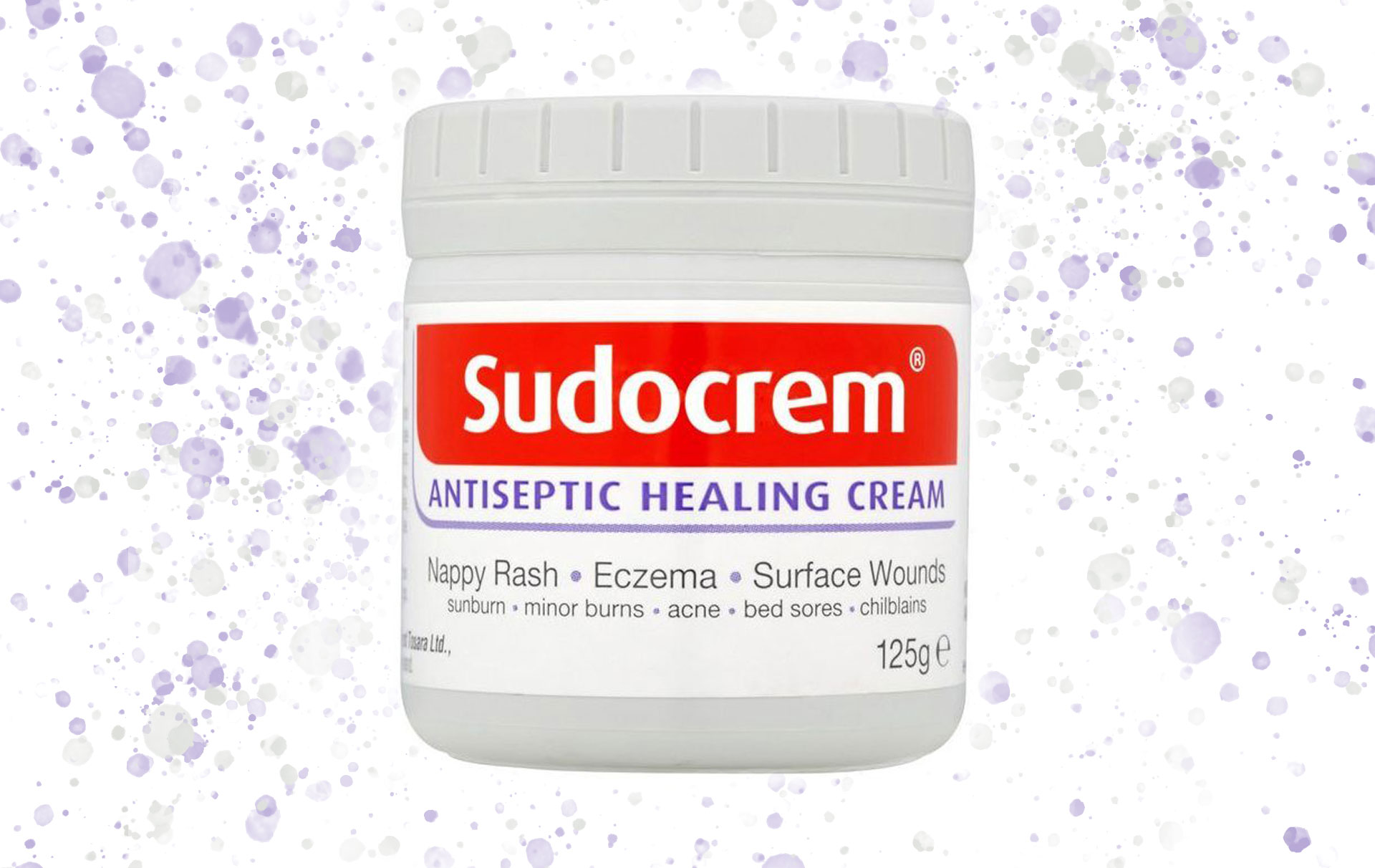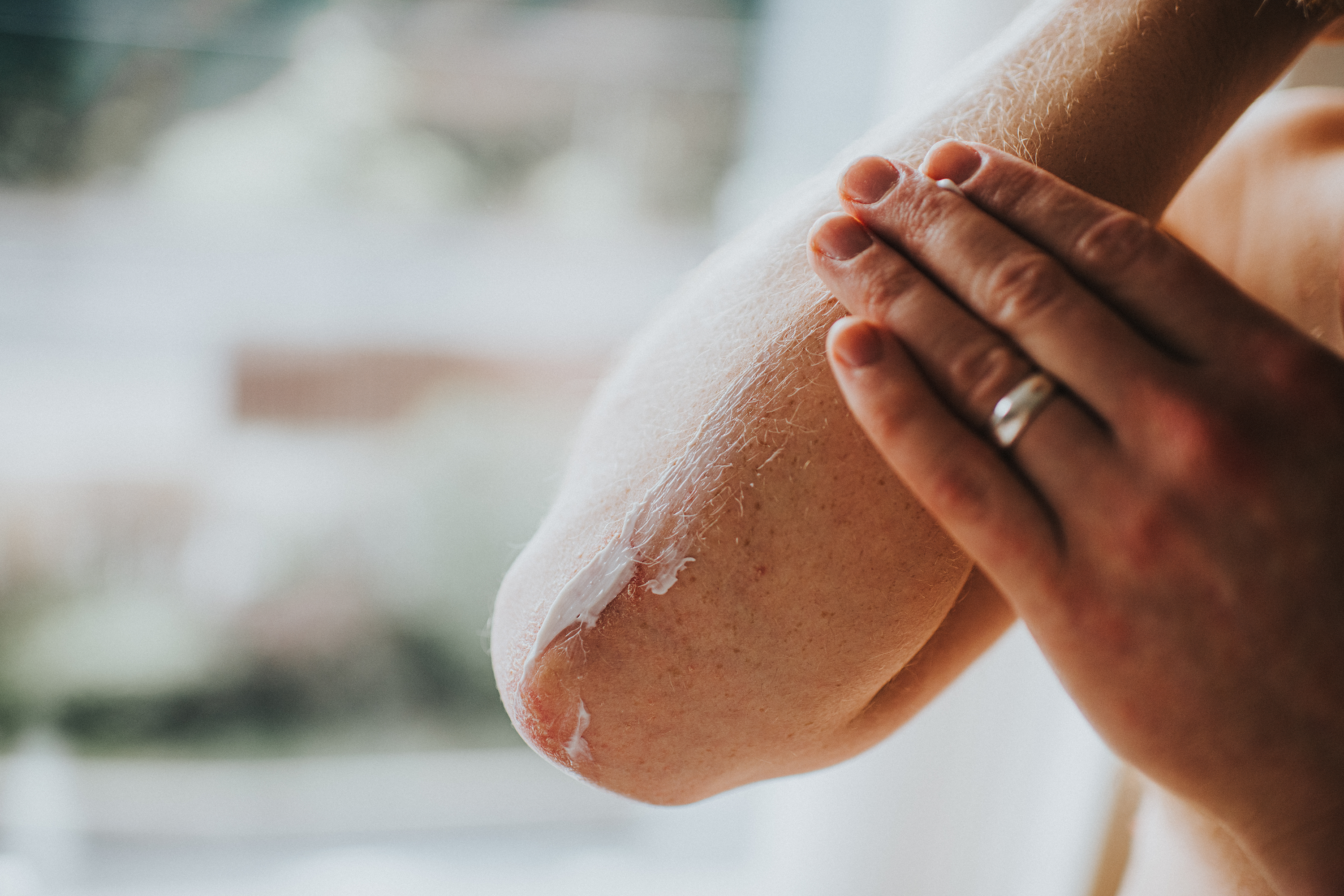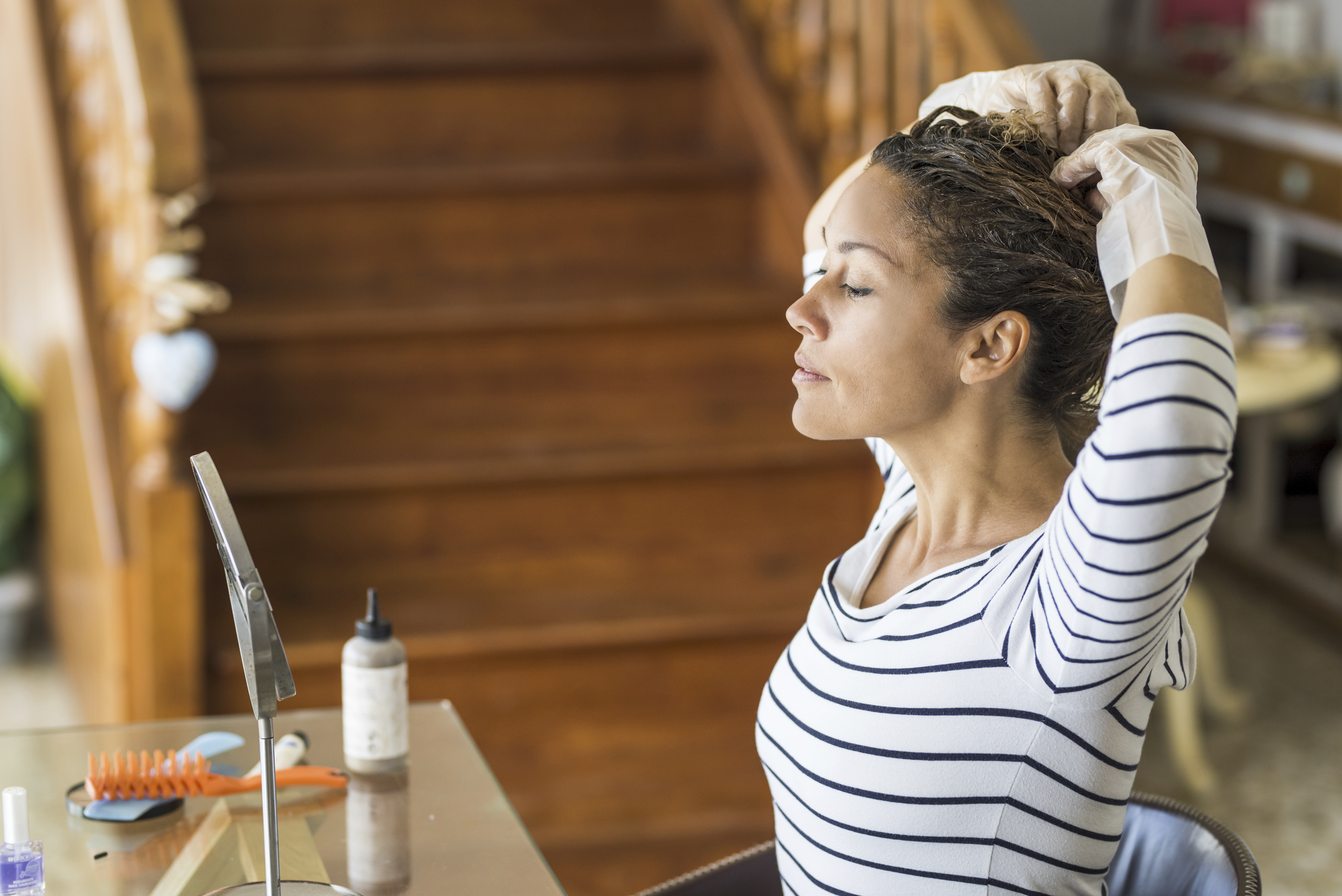Sudocrem uses: things you didn't know you could do with Sudocrem
It's the hero of bathroom cupboard tubs


Sudocrem might not be the most glamorous product on your bathroom shelf but it has so many uses, from treating babies' skin conditions to healing scars.
The first of many Sudocrem uses was as a medicated nappy rash cream but it soon became a staple in every family home, after hitting UK shelves in the 1970s.
Sudocrem is now considered an essential beauty shortcut, a brilliant (but somewhat controversial) way to get rid of spots and just like all the inventive ways to use Bio Oil, the list of uses for Sudocrem just grows longer with new research.
However, experts warn that not all the uses for Sudocrem are actually effective - or safe. In many cases, some of the most popular uses for Sudocrem could result in the condition getting worse.
So what are the main uses for Sudocrem that actually work safely? This is what the experts say...
11 clever Sudocrem uses
- Reduce scars
- Stop chafing
- Creating a hair dye barrier
- Perfect your plucking
- Calm chilblains
- Healing cuts and burn
- Ease molluscum
- Improve insect bites
- Recover from sunburn
- Heal spots
- Soothe eczema

Reduce scars
One of the most popular unofficial uses for Sudocrem is to heal scars.
Although there aren't any studies to suggest that Sudocrem itself actually makes an impact on scars, there is plenty of evidence to prove that one of the cream's key ingredients makes a big impact on reducing the appearance of some scar types.
Parenting advice, hot topics, best buys and family finance tips delivered straight to your inbox.
Sudocrem contains zinc oxide, among other ingredients. Research shows that this product is highly effective in the treatment of hypertrophic scars, which are thickened, wide and often raised scars that come about after a cut or injury doesn't heal properly. Although hypertrophic scars can look different from one to the other, some of the most common causes are surgeries, burns, accidental trauma (cuts) and body piercings.
According to the research, regular topical application of zinc oxide onto the scar will help to reduce the appearance of the scar after six weeks. This means that applying Sudocrem to a scar for a prolonged period of time could make a decent difference in lessening the redness around the scar and improve its appearance.
Stopping chafing
Chafing is sore, red patches of skin that often come about through a combination of skin rubbing together, moisture and often rubbing fabric as well. It's a problem faced by many endurance athletes and people in the summer months, when the combination of the heat and lack of clothing to act as a barrier causes irritation.

While Sudocrem won't prevent chafing from happening, it certainly will help to soothe the condition as it's an antiseptic and contains skin soothing properties. 1Namely, it contains lanolin as one of its key ingredients alongside zinc oxide.
Lanolin has been proven to reduce water loss through the skin by up to 30 percent, which makes it the perfect ointment for the areas of rough, dry and flaking skin that chafing often turns into.
By applying Sudocrem to the area, it won't only help to disinfect the area and prevent pain but will work to sooth skin and help it repair.
Creating a hair dye barrier
This is another popular unofficial use of Sudocrem that doesn't have an scientific backing, but it's been hailed as a winner by everyone from hairdressers to influencers.
This time though, it's not the ingredients in Sudocrem that are useful - it's the makeup of the product itself. Sudocrem is (as it suggests in the name) a cream, which when applied to skin is heavy and doesn't move easily. It's also not damaging to skin itself, so it's the perfect barrier to apply around your hairline when using strong hair dyes as it will prevent any leaking dye from staining the skin. When the dye has been applied, it's then simple to remove.
But other products would work equally as well for the same reasons. Protecting unwanted areas from hair dye is notably one of the most famous uses for Vaseline, as the balm creates a barrier in the same way that Sudocrem does.

Perfect your plucking and waxing
For the same reasons that Sudocrem is effective in reducing scars and stopping chafing, it's the perfect product to use after plucking eyebrows.
After plucking eyebrows, the skin can be red and sore. Two of Sudocrem's key ingredients, lanolin and zinc oxide, work together to soothe the skin and calm the redness in the area. This, however, is likely to go away on its own after a couple of minutes so topical application of Sudocrem isn't really necessary for most people.
It is a product that people use widely after waxing though, as the antiseptic properties in the product's third key ingredient - benzyl alcohol - work to reduce the burning feeling. The lanolin combats soreness and keeps moisture inside the skin, restoring it to a healthier appearance after the wax.
Calm chilblains
Chilblains are red, itchy patches of soreness that appear anywhere on the body after a person has been out in the cold. They usually go away after two to three weeks, with the assistance of topical creams like Sudocrem.
Much like chafing, Sudocrem won't be helpful in preventing chilblains from occurring in the first place as they're caused by cold weather. However, the combination of ingredients in the cream has been proven to soothe the skin, which prevents it from feeling itchy while the chilblains heal.

A study examined the effectiveness of Sudocrem compared to a specific zinc ointment in the treatment of dermatitis, otherwise known as skin irritation. The research concluded that Sudocrem was the superior treatment from preventing itchiness and under the cream's treatment, the skin doesn't deteriorate as it might otherwise do through scratching.
Chilblains on the feet also a look a little like Covid toes, one of the skin conditions associated with coronavirus, though. So if they don't disappear shortly after warming up, it's best to consult your GP for further guidance.
Healing cuts and burns
Sudocrem acts as a protective barrier around the skin and prevents infection in the wound by blocking out bacteria, so it's perfect for treating minor cuts, scrapes and burns.
Zinc has been recognised as a critical element in the body because of the role it plays in growth and development, bone metabolism, the nervous, immune function and importantly, wound healing. However, there's also a study that now confirms zinc, one of the main properties that makes up Sudocrem, helps to speed up the recovery process for cuts and burns. This means that it's not only essential for the wound to heal but extra topical application will also help the site heal faster.
Another element of Sudocrem, benzyl alcohol, also acts as a pain reliever. It's an effective anaesthetic in itself and is used in some surgeries to prolong the effects of other anaesthetics, such as lidocaine.
Ease molluscum
Molluscum is a viral infection that's most common in children. It manifests as firm, raised spots on the skin and they can get extremely itchy. The NHS advises anyone looking to treat molluscum that it will clear up on its own, but Sudocrem does offer some relief from symptoms.

In the same way that Sudocrem offers relief from chilblains, it can ease some of the more uncomfortable molluscum symptoms - such as itchiness.
While the direct relationship between molluscum and Sudocrem hasn't been scientifically proven, many parents also slather on the Sudocrem when the spots (also known as water warts) pop. The zinc in the Sudocrem prevents any scarring while the benzyl alcohol will sooth any pain.
Improve insect bites
This is one of the brand-approved ways to use Sudocrem. They say that the cream "helps to heal wounds by forming a protective layer over the vulnerable area, reducing the risk of infection, and also contains a mild local anaesthetic to soothe discomfort."
The zinc in Sudocrem will also help to reduce the chances of any scarring from the bite, so it's really an essential for every holiday.
Recover from sunburn
All the properties in Sudocrem come together to create the perfect soothing balm for sunburn. While it hasn't be proven to be useful for sunburn specifically, it hasn't been shown to be ineffective at reducing discomfort.

Sudocrem works with sunburn in three different ways. The zinc will help to calm the burn and much in the same way that it works with other burns, will help the wound to heal. While the benzyl alcohol will soothe any resulting pain from the burn and the lanolin works to prevent skin from peeling by trapping in the moisture.
In this way, Sudocrem works in the same way as other heavy moisturiser to protect skin from sunburn.
Calming for spots
One of the most famous uses for Sudocrem is to treat acne. As well as being a nappy rash cream, the brand recognise it as another great way to use the product.
It's thought to be effective in dealing with acne spots because of the zinc oxide and benzyl alcohol in the cream. In fact, a review from 2014 found that topical anti-acne creams that contained zinc were much more likely to be effective than those that didn't. Zinc was found to be equally as effective at reducing the severity of acne as erythromycin, tetracycline or clindamycin, all of which are present in most of the anti-acne treatments out there.
However, there's no proof that just using Sudocrem - or other creams also containing zinc - will control acne.
In the same way, the benzyl alcohol in the cream is suggested to contribute to lessening the severity of acne but there is no scientific evidence to support this yet. It's though the the alcohol dries out cystic acne and also helps to numb the pain associated with large breakouts.

This is why Sudocrem face masks are popular among those who suffer with acne. The idea behind them is to help heal existing blemishes and protect skin against any further infections, however the proof behind this is questionable. Apparently, they work by applying a thin layer to your skin once a week and leaving it overnight.
It is important to consider the other effects that Sudocrem can have on the skin before trying this, however, as benzyl alcohol is known to be drying.
Soothe Eczema
Sudocrem have confirmed that eczema is one of the conditions that the cream can help to soothe - in adults or children.
This is backed up by a review from 2014 which found that zinc reduced symptoms in people who had eczema on their hands. It was discovered to be effective as it had both antibacterial and anti-inflammatory purposes, preventing any infection of the skin and reducing the redness and itchiness associated with the condition.
Similarly, it's been described as "nothing short of a miracle" for those with psoriasis. It works to calm inflamed skin, keep bacteria away from any broken skin, as well as nourishing and protecting the skin from any extra moisture loss.
Sudocrem uses for babies
Sudocrem was originally designed to treat nappy rash and eczema in babies, as the three properties work together to form a protective barrier on babies' skin.
The uses of Sudocrem for babies and adults are much the same. It can be used to treat:
- Nappy rash
- Eczema
- Dry skin
- Sunburn
- Cuts and scrapes
- Insect bites
- Molluscum

Can sudocrem be used on newborns?
Sudocrem can be used on newborns but if you're concerned about their sensitive skin, go for Sudocrem Care & Protect. It's a slightly softer version of the cream that comes in a grey tub and is "a light and gentle ointment that protects the skin from the causes of nappy rash by caring for and protecting your baby’s extra delicate skin."
They also say, "Sudocrem Care & Protect is certified as hypoallergenic, however if your baby has sensitive skin it’s always sensible to ask your pharmacist or GP for advice before you use a new product. You should also take a look at the full list of ingredients in case you recognise something you think your baby’s skin might react to."
So while classic Sudocrem is fine to use on newborns, Sudocrem Care & Protect might be a safer option for anyone particularly worried about their baby's sensitive skin.
Is sudocrem good for your face?
Sudocrem is used to as a topical application for a variety of skin conditions, including those that commonly appear on the face - such as acne.
It's good for your face in the sense that it can work to stop swelling and inflammation, especially in cystic acne for example. But it's ingredients may not work for everyone as Sudocrem can also dry out skin. If you have particularly sensitive skin, whether as an adult or child, then an alternative acne-treatment might be more suitable.

How does sudocrem work?
Sudocrem works as a medicated nappy rash cream. Its main ingredients include zinc oxide, lanolin and benzyl alcohol, all of which play various roles in improving certain skin conditions.
It comes in the form of a heavy cream which can be applied to an area of skin to act as a protective barrier against possible infections, while soothing the skin and numbing minor pain.
Can you use sudocrem on an open wound?
For minor cuts, scrapes and scratches, Sudocrem is a great fix as it can be used on an open wound. It will work as a barrier against any possible bacteria in the short term, before the wound has a chance to heal itself.
However for large gashes and wounds, it's better to visit a GP or contact 111 for further advice. In an emergency, dial 999.
Lauren is a senior content editor covering everything from the latest royal news to fashion, beauty and health content. Lauren graduated from her masters in magazine journalism in 2011, quickly making the transition over to digital and has never looked back. From getting out a breaking news story to penning an in-depth feature, she loves the variety of writing for digital platforms.
